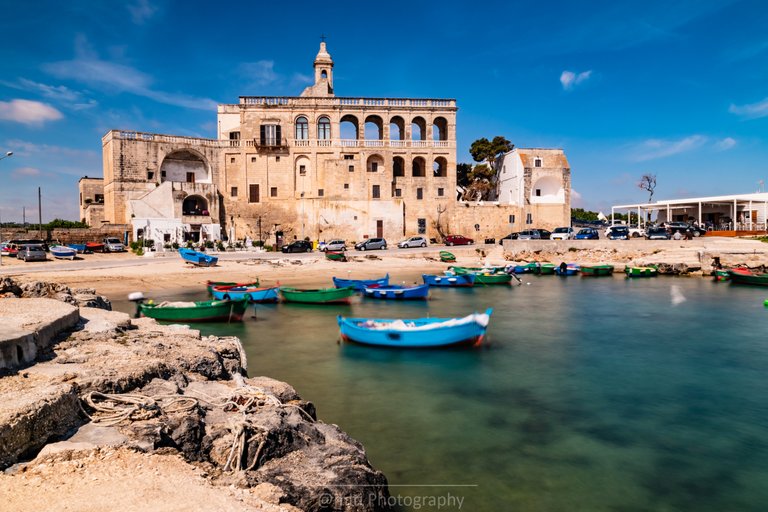
Un saluto a tutti,
oggi vi parlo di una perla nascosta del litorale barese: San Vito!
Posizionato a nord di Polignano a Mare, in piena costa sud-barese, è quasi impossibile definirlo un borgo, in quanto è formato da qualche casa e conta meno di 100 abitanti, ma è una località affascinante, mistica e ricca di storia.

Come il nome suggerisce, questa frazione della (molto) più famosa Polignano a Mare, è dedicata a San Vito in nome dell'omonima Abbazia.
E infatti il colpo d'occhio che si presenta al turista è di quelli che fa venire la pelle d'oca: l'Abbazia posizionata a ridosso del mare, maestosa e fiera mette un pò in soggezione e lascia di stucco.

L'origine risale al lontano secolo X quando si dice che i monaci Basiliani cominciarono la costruzione. Nel secolo successivo furono i monaci Benedettini a stabilirsi qui ma nei secoli si sono succeduti anche altri ordini monastici che hanno reso la storia di questa Abbazia molto travagliata.
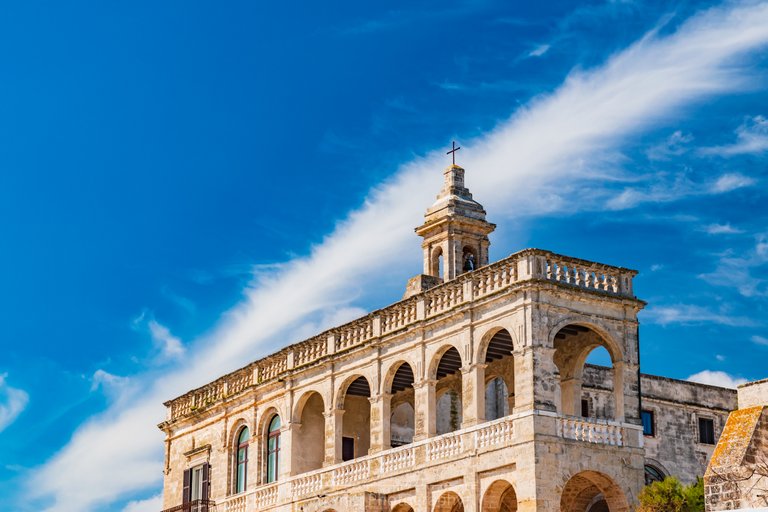
Affascinante la leggenda alla base della costruzione dell'Abbazia: tutto viene fatto risalire alla traslazione delle reliquie di San Vito in questa zona chiamata una nobildonna di Salerno che, mentre stava annegando nel fiume Sele, chiese aiuto a Dio che accolse la sua richiesta mandandole San Vito.
Quest'ultimo la salvò a patto che lei avesse fatto traslare le sue spoglie nel “locus marianus” che la nobildonna, dopo varie peripezie, scoprì essere il castrum polymnianense in Puglia (luogo dove attualmente risiede l'Abbazia).
Le reliquie sante, seppellite in quel luogo lo resero prospero e così i monaci Basiliani decisero di costrire in quel luogo quella che oggi conosciamo come Abbazia di San Vito.
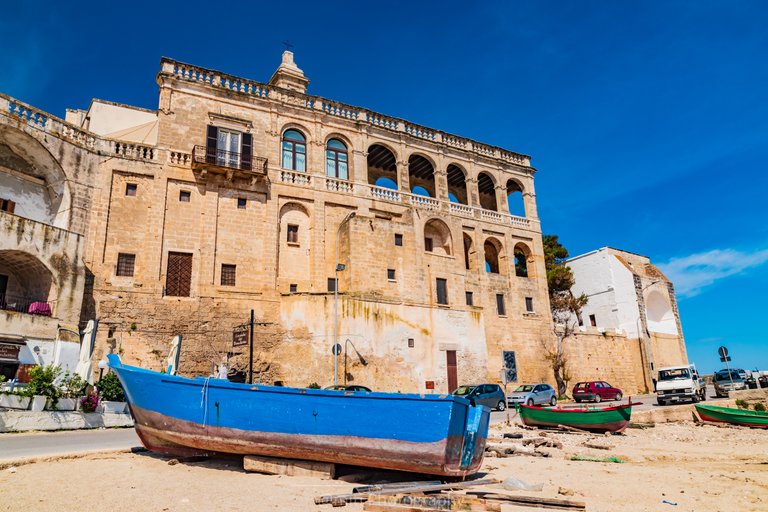
La struttura ha una pianta quadrangolare di forma irregolare e dalla strada è già possibile ammirare il grande portico, composto da logge con arcate a tutto sesto. Il campanile, altissimo, è visibile da grande distanza e riporta le caratteristiche del barocco leccese. All'interno è possibile ammirare un piccolo chiostro con un pozzo.
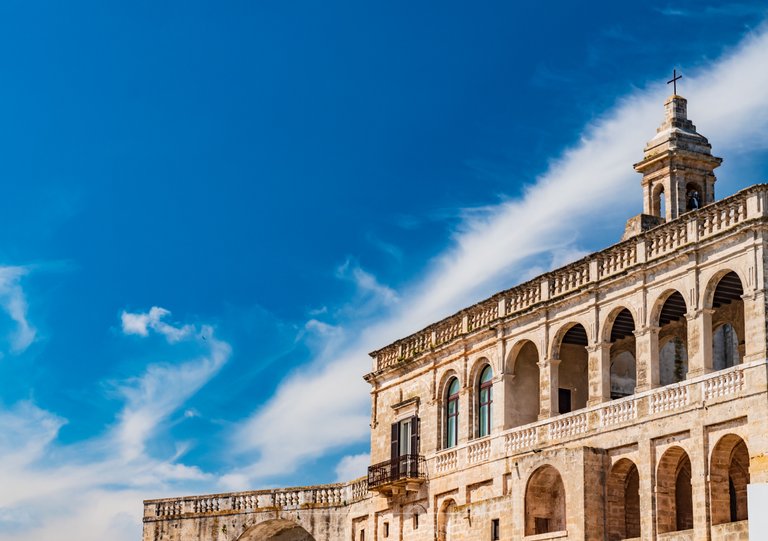
Questa Abbazia è uno dei complessi monastici più antichi d'Europa e nonostante le sue origini religiose, da circa 150 anni è di proprietà privata (benchè aperta ai visitatori) in seguito alla vendita della stessa da parte dello Stato Italiano che nel frattempo ne era diventato proprietario.
Fa eccezione la chiesa al suo interno che rimane di proprietà del Fondo di Edifici di Culto del Ministero degli Interni (quindi ancora dello Stato) anche se data in concessione alla Chiesa in quanto luogo di culto.

L'abbazia ha i tratti barocchi anche se la Chiesa interna è in perfetto stile romanico, questo perchè essa fu costruita sulle rovine dell'antica torre romana; essa è formata da tre navate con volte a botte nelle navate secondarie.
Oggi parte dell'abbazia è adibita ad attività ristorativa e devo dire che è molto suggestivo poter consumare un pasto al suo interno.
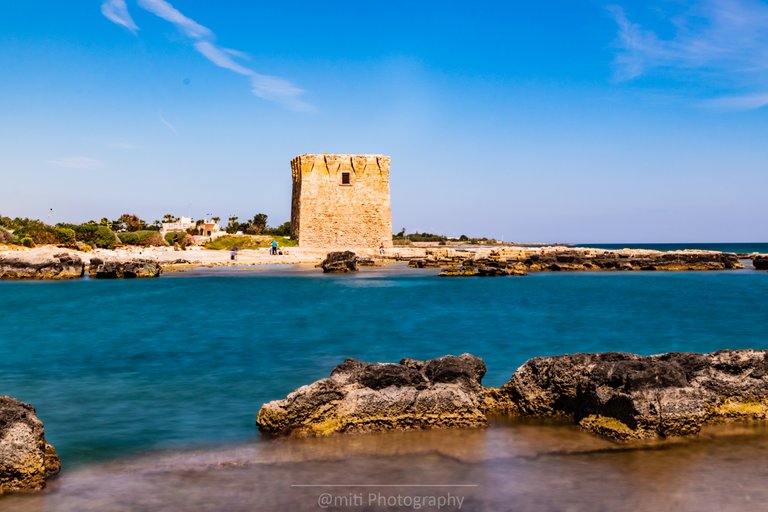
Proprio di fronte all'abbazia si può ammirare una costruzione altrettanto affascinante: la torre saracena nei cui dintorni ancora è possibile ammirare la peschiera in cui venivano allevate le anguille.
Essa aveva la funziona di torre di avvisamento e la sua origine si fa risalire presumibilmente all'età barocca.
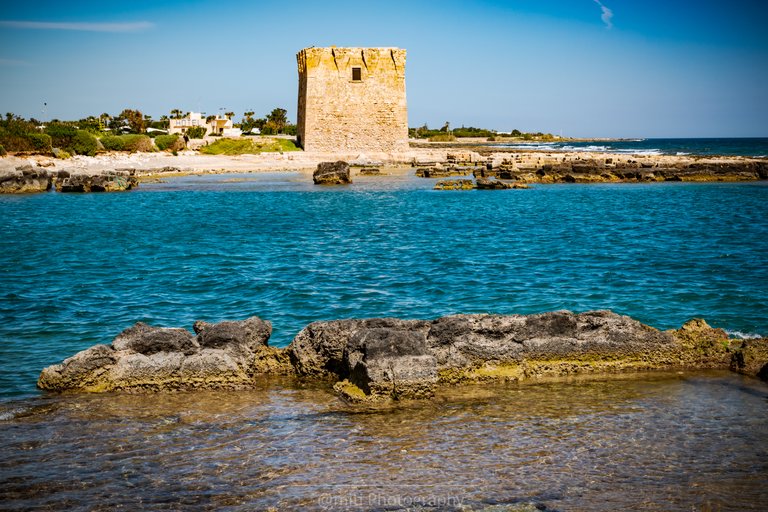
L'intera zona è presa d'assalto durante l'estate, periodo nel quale l'intero complesso cambia i suoi connotati: da luogo pacifico e mistico in cui passare delle ore in modo rilassante e gustando degli ottimi piatti a base di pesce, si trasforma in un luogo in cui è il mare a farla da padrona anche grazie alle splendide spiagge sabbiose in cui si riversano migliaia di bagnanti.
Le più importanti sono quelle di Porto Contessa, Porto Cavallo e la stessa spiaggia ai piedi dell'Abbazia, dove è possibile anche ammirare le barche dei pescatori ormeggiate nel piccolo golfo.
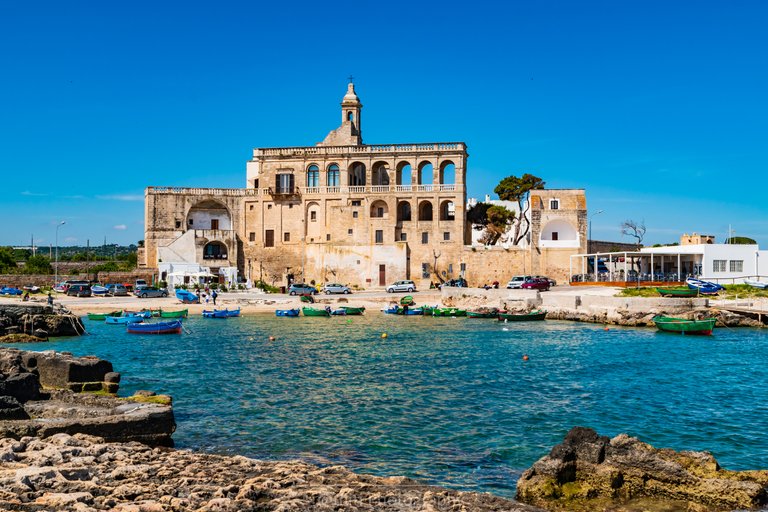
Nei dintori dell'Abbazia risiedono numerose coltivazioni, tra cui quelle più importanti sono quelle delle famose carote di Polignano oltre a quelle di angurie e meloni.
Insomma, è un luogo che ha tanto da offrire, che sia estate oppure no.. e secondo me merita una visita!
Carlo.
Tutte le foto sono mie e i diritti riservati.

The English version is a translation of the original in Italian for information purposes only and it's translated by google translator due to lack of time

Hello everybody,
today I tell you about a hidden pearl of the Bari coast: San Vito!
Located north of Polignano a Mare, in the south-Bari coast, it is almost impossible to call it a village, as it is made up of a few houses and has less than 100 inhabitants, but it is a fascinating, mystical and rich in history location.

As the name suggests, this fraction of the (much) more famous Polignano a Mare is dedicated to San Vito in the name of the Abbey of the same name.
And in fact the glance that presents itself to the tourist is one that makes goosebumps come: the Abbey positioned close to the sea, majestic and proud, puts a little in awe and leaves you stunned.

The origin dates back to the X century when the Basilian monks are said to have started construction. In the following century it was the Benedictine monks who settled here but over the centuries other monastic orders followed which made the history of this Abbey very troubled.

The legend behind the construction of the Abbey is fascinating: everything is traced back to the translation of the relics of San Vito in this area called a noblewoman of Salerno who, while she was drowning in the river Sele, asked for help from God who accepted his request by sending her San Vito.
The latter saved her on condition that she had her remains moved to the "locus marianus" which the noblewoman, after various vicissitudes, discovered to be the castrum polymnianense in Puglia (the place where the Abbey currently resides).
The holy relics, buried in that place made it prosperous and so the Basilian monks decided to build in that place what we now know as the Abbey of San Vito.

The structure has an irregularly shaped quadrangular plan and from the street it is already possible to admire the large porch, composed of loggias with round arches. The bell tower, very high, is visible from a great distance and shows the characteristics of the Lecce Baroque. Inside you can admire a small cloister with a well.

This Abbey is one of the oldest monastic complexes in Europe and despite its religious origins, for about 150 years it has been privately owned (although open to visitors) following the sale of the same by the Italian State which in the meantime had become one owner.
An exception is the church inside which remains the property of the Ministry of the Interior Fund of Worship Buildings (therefore still of the State) even if it is given as a place of worship to the Church.

The abbey has baroque features even if the internal church is in perfect Romanesque style, this because it was built on the ruins of the ancient Roman tower; it is made up of three naves with barrel vaults in the secondary naves.
Today part of the abbey is used for catering and I must say that it is very suggestive to be able to have a meal inside.

Just in front of the abbey you can admire an equally fascinating construction: the Saracen tower in whose surroundings you can still admire the fishpond where eels were bred.
It had the function of a warning tower and its origin dates back presumably to the Baroque age.

The whole area is stormed during the summer, a period in which the whole complex changes its connotations: from a peaceful and mystical place in which to spend hours relaxing and enjoying excellent fish dishes, you it transforms into a place where the sea is the master, thanks also to the splendid sandy beaches where thousands of bathers flock.
The most important are those of Porto Contessa, Porto Cavallo and the same beach at the foot of the Abbey, where it is also possible to admire the fishermen's boats moored in the small gulf.

Numerous crops reside in the Abbey's surroundings, among which the most important are those of the famous Polignano carrots as well as those of watermelons and melons.
In short, it is a place that has a lot to offer, be it summer or not .. and in my opinion it is worth a visit!
Twitter :
Congratulations, your post has been added to Pinmapple! 🎉🥳🍍
Did you know every user has their own profile map?
And so does every post as well!
Want to have your post on the map too?
Ciao, ho iniziato da poco a seguirti. Che bel post! Pazzesca San Vito, spero di visitarla un giorno. E che mare... 😮 grazie per la tua condivisione!
Si è un posto che merita di sicuro una visita se si capita in zona!
Spettacolo! Mi ricorda parecchio Cefalù in Sicilia.
Grazie! Si, a cefalù ci sono stato e in effetti, molto in piccolo, la ricorda!
Davvero incantevole e suggestiva questa piccola località e molto belle anche le foto
Grazie! Se dovessi capitare dalle parti di Polignano a Mare, ti consiglio di visitarla!
Ciao.
Link all'articolo sulla Pagina Facebook di Hive Italia
Grazie!